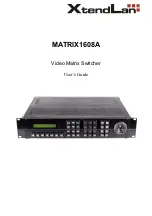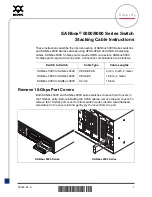
Layer 2 Overhead
Link MTU and IP MTU Delta
Tagged Packet
with VLAN-Stack
Header
26 bytes
negotiation auto
Enable auto-negotiation on an interface.
Syntax
negotiation auto
To disable auto-negotiation, use the
no negotiation auto
command.
Defaults
Enabled.
Command
Modes
INTERFACE
Command
History
Version 9.2(0.0)
Introduced on the M I/O Aggregator. This command is
supported in Programmable-Mux (PMUX) mode only.
Version 8.3.16.1
Introduced on the MXL 10/40GbE Switch IO Module.
Usage
Information
The
no negotiation auto
command is only available if you first manually set
the speed of a port to
10Mbits
or
100Mbits
.
The
negotiation auto
command provides a
mode
option for configuring an
individual port to forced-master/forced slave after you enable auto-negotiation.
If you do not use the
mode
option, the default setting is
slave
. If you do not
configure forced-master or forced-slave on a port, the port negotiates to either a
master or a slave state. Port status is one of the following:
• Forced-master
• Force-slave
• Master
• Slave
• Auto-neg Error — typically indicates that both ends of the node are configured
with forced-master or forced-slave.
CAUTION: Ensure that one end of your node is configured as forced-master
and one is configured as forced-slave. If both are configured the same (that
is, forced-master or forced-slave), the
show interfaces
command flaps
between an auto-neg-error and forced-master/slave states.
You can display master/slave settings with the
show interfaces
command.
574
Interfaces
















































